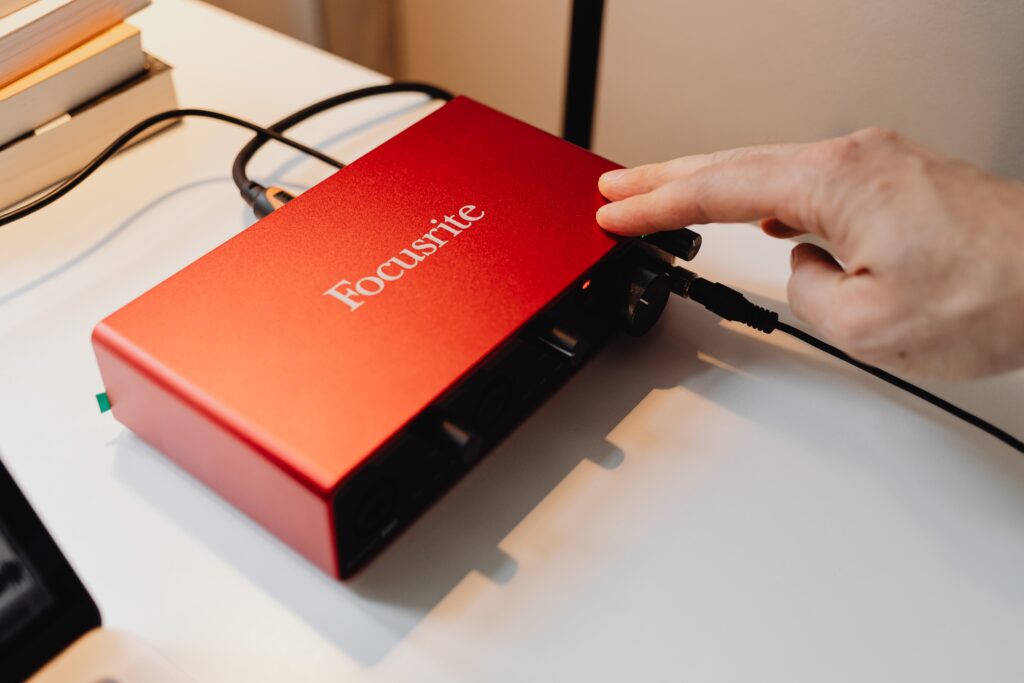The 10 Best Audio Interfaces for Home Recording
Recording music from home has become a popular hobby and profession, especially in recent times. With the advancement of technology, you can now create high-quality music from the comfort of your own home. One of the most important pieces of equipment that you need to have is an audio interface. An audio interface is a device that connects your instruments, microphones, and speakers to your computer. It’s important to choose the right audio interface that suits your needs. Here are the 10 best audio interfaces for home recording.
1. Focusrite Scarlett 2i2
The Focusrite Scarlett 2i2 is a popular choice for home recording. It’s a simple and affordable option for anyone starting out. It has two combo inputs that can be used for microphones or instruments, and it comes with two Scarlett mic preamps that provide excellent sound quality.
2. Universal Audio Apollo Twin MKII
The Universal Audio Apollo Twin MKII is a more expensive option, but it’s worth the investment. It has two mic/line preamps, and it comes with Universal Audio’s proprietary plugins that emulate classic analog gear. It also has a built-in DSP processor that allows you to record with near-zero latency.
3. PreSonus Studio 26c
The PreSonus Studio 26c is a versatile audio interface that can be used for recording, podcasting, and live streaming. It has two combo inputs with XMAX-L preamps that provide clean and clear sound. It also comes with Studio One Artist software that allows you to record and mix your music.
4. Apogee Duet
The Apogee Duet is a high-end audio interface that’s perfect for professional recording. It has two microphone preamps and can support up to 24-bit/192kHz audio. It also has a built-in headphone amp and comes with Apogee’s Maestro software that allows you to control your inputs and outputs.
5. Behringer U-Phoria UMC404HD
The Behringer U-Phoria UMC404HD is a budget-friendly option for home recording. It has four combo inputs and four outputs, and it comes with MIDAS preamps that provide warm and transparent sound. It also has a built-in USB audio interface that allows you to connect directly to your computer.
6. Steinberg UR22MKII
The Steinberg UR22MKII is a compact and portable audio interface that’s great for musicians on the go. It has two combo inputs with D-PRE preamps that provide high-quality sound. It also comes with Cubase AI software that allows you to record and mix your music.
7. M-Audio AIR 192|14
The M-Audio AIR 192|14 is a versatile audio interface that can be used for recording vocals, guitars, and drums. It has four combo inputs and comes with Crystal preamps that provide clear and detailed sound. It also has a built-in MIDI interface and comes with ProTools First software.
8. MOTU M2
The MOTU M2 is a compact and affordable audio interface that’s perfect for home recording. It has two combo inputs with clean and transparent preamps. It also has a built-in headphone amp and comes with MOTU’s Performer Lite software.
9. RME Babyface Pro FS
The RME Babyface Pro FS is a high-end audio interface that’s perfect for professional recording. It has two microphone preamps and can support up to 24-bit/192kHz audio. It also has a built-in DSP processor that allows you to use RME’s TotalMix FX software, which provides flexible routing and mixing options.
10. Audient iD4
The Audient iD4 is a compact and portable audio interface that’s great for musicians on the go. It has one microphone preamp and one instrument input, and it comes with Audient’s proprietary ScrollControl feature that allows you to control your DAW with the volume knob.
Choosing the right audio interface can be overwhelming, but these 10 options provide a range of choices for every budget and level of experience. Whether you’re just starting out or you’re a professional recording artist, there’s an audio interface that’s right for you.
When considering which audio interface to choose, there are a few things to keep in mind. First, consider the number of inputs and outputs that you’ll need. If you’re recording a full band, you’ll need an interface with more inputs. If you’re a solo artist, a simpler interface may suffice. Second, consider the quality of the preamps. Good preamps are essential for capturing high-quality sound. Finally, consider the software that comes with the interface. Some interfaces come with powerful DAW software that can be used for recording, mixing, and mastering.
In conclusion, the right audio interface can make all the difference in the quality of your home recordings. The 10 options listed above are some of the best in the market, offering a range of features and prices. Consider your needs and budget when choosing the right interface for your home studio, and happy recording!
Thanks for reading this blog post on music equipment reviews! If you enjoyed this article and want to read more like it, make sure to check out our blog https://rhythmsphere.com/blog/. There, you’ll find a wide variety of music-related topics, including product reviews, industry news, and helpful tips and tricks. Don’t forget to subscribe to our newsletter so that you never miss an update. Thank you for your continued support of Rhythmsphere!

